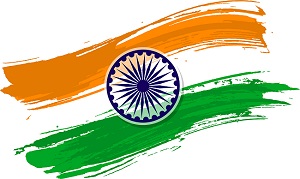Dec 06, 2025
Dec 06, 2025
India, a country that is a “mere geographical expression”, which is “no more a united nation than the Equator” for Winston Churchill of the 1940s, is about to celebrate its 77th Independence Day.
For the colonialists, India, with its kind of ethnic, religious, linguistic, and developmental diversities, cannot dream of having self-government. They even predicted that if the British left, it would “fall back quite rapidly … into the barbarism and privations of the Middle Ages.”
Similar trepidations — “forecasts of imminent dissolution, or of its descent into anarchy or authoritarian rule” — continued to haunt the country even after it commenced its independent journey towards its chosen ‘tryst with destiny’. Not surprisingly and despite these predictions, we have remained together — both in our fight against internal and external threats and in progress. We have proved to ourselves that ‘democracy’ is a cherished value to us.
Not surprisingly and despite these predictions, we have remained together — both in our fight against internal and external threats and in progress. We have proved to ourselves that ‘democracy’ is a cherished value to us.
And the credit for this goes to Pandit Jawaharlal Nehru —the first Prime Minister Of Independent India—who at the stroke of midnight hour on August 14, 1947, when India “awakened to life and freedom” from years of suppression, pondered thus:
“The future beckons to us. Whither do we go and what shall be our endeavor? To bring freedom and opportunity to the common man, to the peasants and workers of India; to fight and end poverty and ignorance and disease; to build up a prosperous, democratic and progressive nation, and to create social, economic and political institutions which will ensure justice and fullness of life to every man and woman.”
This ‘unending quest’ that Pandit Nehru launched 76 years back and navigated for the first 17 years assiduously, leaving behind a certain ‘something’ about his midwifery to the nation’s cause which even to date smells sweet, is still firing the nation’s zeal, though one is not sure if we have ended “poverty and ignorance and disease and inequality of opportunity. ”Nor could the nation wipe out “every tear from every eye,” for worries continue to haunt rural India.
That said, we must also note that the progress we have achieved during the last 76 years is phenomenal. Today’s India is more vibrant, confident, and enterprising. Its economy which once almost stagnated under colonial rule for more than a century, is today growing at around 6% plus. It has improved its literacy rate, banished famines, drastically reduced poverty, achieved global competitiveness in information technology, became a de facto member of the nuclear club, and its democratic government’s commitment to secularism that has taken the nation forward with all its inherent diversities has become its hallmark.
Talking of India’s accomplishment in managing its inherited diversities much against the speculation of many skeptics, one is reminded of the strong foundation laid by its maharishis of yore for nurturing the spirit of accommodating diverse languages and lifestyles—all under a unifying umbrella of dharmic principles enshrined in the Vedas and Upanishads.
Interestingly, for these maharishis India is: Jambudweepe, Bharatvarshe, Bharatakhande… For them India is a khand of chappanna-desh. Each of them—Anga, Vanga, Kalinga, Khambhoja, Sourashtra, etc.—is encouraged to live with its own language, its own customs, and practices, almost as an independent state. But the use of local languages is just limited to the material world. When it comes to their adhyatamic pursuits, right from Kanyakumari to Kashmir, everyone has to resort to Sanskrit—God’s language in which their dharma had been enshrined. They had no alternative and that holds good even today.
In the same vein, their epics are in Sanskrit. Nobody knows in what language Sri Rama spoke to Sita. Yet, everyone knows him through Sanskrit. And so only he has become the soulmate of everybody.
The concept of Bharatvarsha and chappanna-desh is like light and darkness. When light is there, darkness remains away. And in darkness light becomes invisible. Similarly, when an individual is Bengali, the Indian in him stays away. In the same way, when a Bengali becomes Indian, then Bengali disappears. And as light cannot be perceived without darkness, an Indian cannot be perceived without there being a Bengali, Gujarati, Malayali, etc., and vice versa. The maharshis of yore have thus ingrained the concept of ‘unity in diversity’ at the dawn of civilization.
It is through such yoking together of diverse lingua franca by subordinating their material living to the unifying dharma expressed in Sanskrit, that the maharshis could succeed in creating and sustaining Bharatvarsha.
And so long as India abides by these inherited values—the “loftiest Vedantic thought, Vasudeva Kutumbakam”—nothing can wean it away from its chosen path of being a free, all-encompassing, progressive and progressing nation.
12-Aug-2023
More by : Gollamudi Radha Krishna Murty